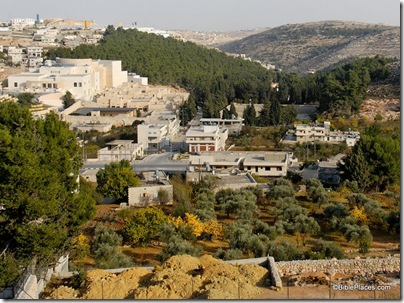Gordon Franz has a new article posted in the “Cracked Pot Archaeology” category of his Life and Land blog. His entry entitled “Yahweh Inscription Discovered at Mount Sinai” is an analysis of recent claims by Robert Cornuke concerning an inscribed stone allegedly found near Jebel al-Lawz in Saudi Arabia. Franz includes drawings of the inscription, a link to a video with Cornuke’s presentation, and a careful rebuttal of the reading and authenticity of the inscription.
I won’t repeat Franz’s analysis here, but will only make the observation that there will always be a market for the sorts of things that Cornuke and others like him are selling. Why? Some people (rightly) believe the Bible is a trustworthy historical source. Some people (rightly) believe that scholarship and media are biased against their views. Some people (wrongly) conclude that anything that scholarship and the media dismiss is trustworthy. This leaves a wide open door for charlatans, hucksters, as well as well-meaning but ignorant individuals. The key to success lies not in knowledge of the subject but in an ability to communicate.
I’ve commented previously on Cornuke’s claims here and here.
Aren Maeir, archaeologist of Gath, was at the Jerusalem conference today at which Haggai Misgav presented his reading of the Qeiyafa ostracon. Maier reports on the meeting and provides an English translation.
You need to go to Maeir’s blog for the data and some of his thoughts, but I offer a brief comment. If you study these things from afar, you may be unimpressed with the fragmentary inscription and the difficulty of making any sense out of it (indeed, one respondent suggested that it’s a sort of lexical list). And if this inscription was one of thousands found, it would likely be yet undeciphered or published like many archive texts today. But this text apparently dates to 1000 BC, which is a period of great discussion these days among archaeologists and biblical scholars. To give one example, scholars debate today the degree of literacy at this period; this ostracon indicates proficiency in Hebrew some distance from the capital city of Jerusalem. Certainly the mention of the words “judge” and “king” at this period are provocative. It will be interesting to see how the discussion goes and if any views are changed because of this potsherd.
- Tagged Discoveries, Shephelah
I was at the meeting about the Qeiyafah inscription earlier today. Fanstastic! Will update later on.
- Tagged Shephelah
We’re not sure who built the enormous water reservoirs three miles south of Bethlehem, but there’s no evidence that they are related to their namesake. It is most likely that King Herod or one of his successors built these pools to supply Jerusalem with water. A complex and sophisticated series of aqueducts was constructed both to feed these three pools as well as to transport the water from here to multiple locations in Jerusalem.
The water system naturally required repair over the years, but it continued in use, off and on, through the British Mandate period. One evidence of the significance of these pools is the presence of a fortress built by Suleiman the Magnificent in the 16th century. (Yes, this is the same ruler who built the walls around the Old City of Jerusalem and constructed the fortress still standing at Aphek-Antipatris.)
The photo below was taken by the American Colony photographers in the early 1900s.
Today the area has changed dramatically, making it difficult even to locate Suleiman’s fortress. Other attempts that I have made to photograph the three pools have been thwarted by the forest that has been planted in the area.
The top photograph is from the newly published Southern Palestine volume of The American Colony and Eric Matson Collection (originally Library of Congress, LC-matpc-07571). The CD includes more than 550 high-resolution photographs from the Dead Sea, Jordan River, Jericho, Judean hill country, Shephelah, and Negev.
- Tagged American Colony Photos, Judah, Then and Now
Conservation work on the beautiful 4th century Lod mosaic has revealed a number of sandal prints.
From the Jerusalem Post:
“We look for drawings and sketches that the artists made in the plaster and marked where each of the tesserae will be placed,” Neguer said. “This is also what happened with the Lod mosaic: beneath a piece on which vine leaves are depicted, we discovered that the mosaic’s builders incised lines that indicate where the tesserae should be set, and afterwards, while cleaning the layer, we found the imprints of feet and sandals: sizes 34, 37, 42 and 44.”
He said that similarities of the footprints of the sandals lie in the fact that sandals today are based on the footwear of the past.
“They’re simple,” Neguer said. “If it’s comfortable, why change it.”
The 1,700 year old mosaic, which is one of the largest in Israel, was discovered in the city of Lod in 1996 and was covered again when funding could not be found for conservation.
The full story and photographs are here (see also Arutz-7). The Israel Antiquities Authority has four high-resolution photos for download (press release here; zip file here). This mosaic was mentioned previously on this blog here. These footprints are not related to another set of “footprints” discovered in April.
- Tagged Excavations
The BiblePlaces Blog provides updates and analysis of the latest in biblical archaeology, history, and geography. Unless otherwise noted, the posts are written by Todd Bolen, PhD, Professor of Biblical Studies at The Master’s University.
As an Amazon Associate we earn from qualifying purchases. In any case, we will provide honest advice.

